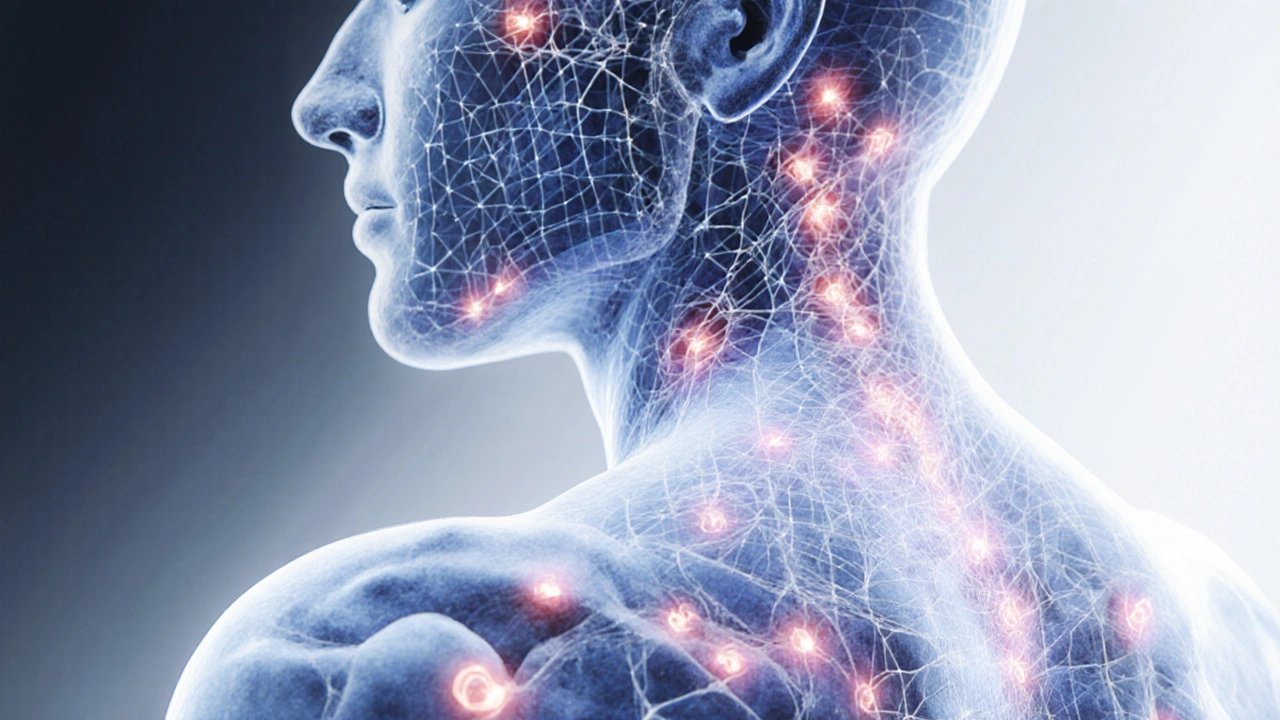Myofascial Release Therapy: The New Era of Healing

Myofascial Release Safety Checker
Check if you have conditions that might make myofascial release therapy unsafe. This tool is for informational purposes only and doesn't replace professional medical advice.
Imagine a technique that literally untangles the body’s biggest hidden web, easing chronic aches and restoring movement. That’s what myofascial release therapy promises - a fresh, evidence‑backed approach to pain relief that’s gaining traction in clinics and sports centers alike.
What is Myofascial Release Therapy?
Myofascial Release Therapy is a hands‑on manual method that targets the thin, connective tissue layer called fascia surrounding muscles, bones, nerves and organs. By applying gentle, sustained pressure, the therapist encourages the fascia to lengthen, release adhesions, and regain its natural glide.
Fascia itself is a continuous network of collagen and elastin fibers. When it becomes stiff or scarred - often from injury, repetitive strain, or prolonged poor posture - it can create tension points known as myofascial trigger points, which radiate pain far beyond the original site.
How Does It Work? The Science Behind the Stretch
During a session, the practitioner uses their hands, elbows, or specialized tools to apply low‑load, prolonged stretches (typically 90-120 seconds per area). This approach differs from deep‑tissue massage, which relies on high pressure and rapid strokes.
- Mechanical Deformation: The sustained pressure slowly remodels the collagen fibers, allowing them to realign in a more organized pattern.
- Neurophysiological Reset: Prolonged stretching stimulates proprioceptive receptors, reducing the nervous system’s pain signaling and lowering muscle guarding.
- Fluid Flow Improvement: By freeing up the fascial layers, interstitial fluid circulates more freely, delivering nutrients and flushing metabolic waste.
Studies from the Journal of Bodywork and Movement Therapies (2023) showed a 42% reduction in pain scores for participants with chronic low‑back pain after eight weekly myofascial release sessions.
Key Benefits and Conditions Treated
Because fascia permeates every structure, releasing it can alleviate a wide range of complaints:
- Chronic back, neck, and shoulder pain
- Headaches and migraine triggers linked to neck tension
- Fibromyalgia flare‑ups
- Post‑ural injuries (e.g., whiplash, sports strains)
- Postural dysfunction and limited range of motion
- Scar tissue adhesions after surgery
Clients also report improved mobility for everyday activities - think reaching a high shelf or bending to tie shoes without a wince.

What to Expect in a Myofascial Release Session
First‑time visits typically follow this flow:
- Intake & Assessment: The therapist asks about medical history, pain patterns, and movement limitations.
- Palpation: Hands glide over the body to locate tight bands, trigger points, and restricted fascia.
- Targeted Release: Gentle sustained pressure is applied to each identified area. You may feel a gradual stretch, a subtle “release” sensation, or a mild ache that fades.
- Movement Integration: After releasing, the therapist may guide you through gentle stretches or functional movements to reinforce the new tissue length.
- After‑care Guidance: Recommendations on hydration, posture, and at‑home techniques are provided.
Sessions last 45-90 minutes, depending on the client’s needs. The environment is usually quiet, with dim lighting and soothing music to promote relaxation.
Choosing the Right Practitioner
Not all massage therapists are trained in fascia work. Look for these credentials:
- Certified Myofascial Release Practitioner (CMRP) - a widely recognized certification.
- Background in physical therapy, osteopathy, or chiropractic care.
- Continuing education in anatomy and biomechanics.
Ask potential providers about their experience with specific conditions you face. A good therapist will explain their approach, obtain informed consent, and adapt pressure to your comfort level.

Self‑Care: Extending the Benefits at Home
While professional sessions kick‑start the healing, regular self‑maintenance keeps fascia supple:
- Foam Rolling: Spend 1-2 minutes on each major muscle group, focusing on tight spots.
- Dynamic Stretching: Incorporate movements like torso twists and shoulder circles before workouts.
- Hydration: Water supports fascial elasticity; aim for at least 2 liters per day.
- Posture Check‑ins: Use a phone reminder to straighten shoulders and engage core throughout the day.
- Heat Therapy: Warm showers or heating pads can relax fascia before a gentle stretch.
Consistency is key - short daily habits often outperform a single monthly deep session.
Risks, Contraindications, and When to Pause
Myofascial release is generally safe, but avoid it if you have:
- Severe osteoporosis or bone fractures
- Acute inflammation or infection in the treatment area
- Uncontrolled hypertension (deep pressure can raise blood pressure temporarily)
- Recent surgery without doctor clearance
Pregnant clients should inform their therapist; specialized techniques can accommodate the changing body safely.
Frequently Asked Questions
Is myofascial release painful?
It should feel like a gentle stretch rather than intense pain. A mild ache may appear during release, but it should subside quickly. Always communicate with your therapist if discomfort feels sharp.
How many sessions are needed?
Most people notice improvement after 4-6 weekly sessions. Chronic conditions may require a longer course combined with home care.
Can I combine myofascial release with other therapies?
Absolutely. It pairs well with physiotherapy, acupuncture, and even yoga. The key is to keep your practitioner informed so techniques complement rather than conflict.
Is there scientific evidence supporting its effectiveness?
Peer‑reviewed studies have documented reduced pain scores, increased range of motion, and improved quality of life for patients with low‑back pain, neck pain, and fibromyalgia after consistent myofascial release treatment.
What should I wear to a session?
Comfortable, loose clothing works best - think athletic wear or leggings. This allows the therapist easy access to muscles without the need for disrobing.
Whether you’re an athlete seeking quicker recovery, a desk‑bound professional battling tension, or anyone craving a gentler way to manage pain, myofascial release therapy offers a modern, science‑backed path to healing. By addressing the body’s connective web, it restores the flow of motion and comfort, ushering in what many are calling a new era of holistic health.





